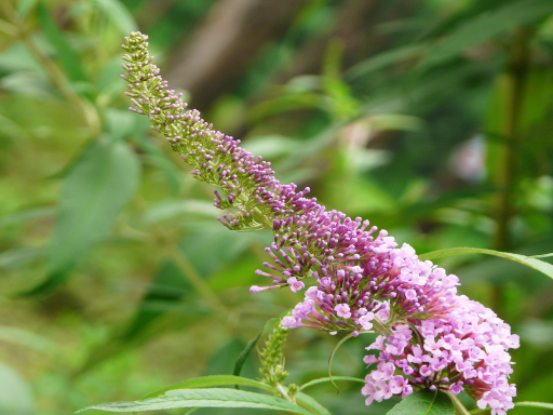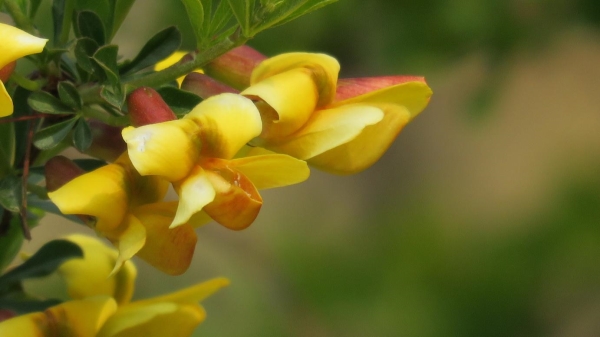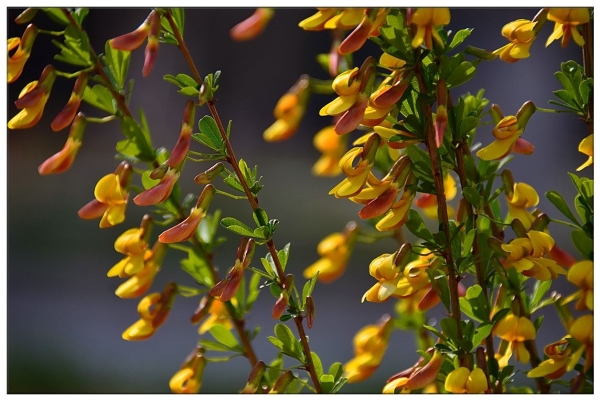Breeding method of buddleja
Drunken fish grass we usually choose three propagation methods, container seedling propagation, hardwood seedling propagation and cutting propagation.
1. Container seedling
Container seedlings, usually we choose to raise seedlings in spring, mix peat, rotten sheep dung and fine sand according to the proportion of 2:1:1, after disinfection into a hole plate or nutrition bag, spread the seeds evenly in the container, spray water to moisturize. When the seedlings grow to 20 cm high, ramets are transplanted and planted.
two。 Hardwood cuttage
The perlite with strong water permeability was selected as the cutting substrate, and the one-year-old branches with strong growth and free of diseases and insect pests were selected in early spring, and the panicles of 15cm and 20cm were cut, soaked in water for one day and one hour, and then cut, timely spray moisturizing and seedling maintenance and management.

3. Tender wood cuttage
We usually choose to carry out tender wood cutting in the peak growth period in July, select robust branches without insect pests, cut 10cm or so, and cut them into the soil where fine sand, perlite and peat are mixed at 1:1:2 and sterilized. After cutting, water is sprayed 4 times a day and 5 times a day. Reduce spraying water after rooting and refine seedlings about a week before emergence. Softwood cuttings have the advantages of short cycle and high rooting rate.
The above is the editor's introduction about drunken fish and grass. I hope it will be helpful to the flower friends! Thank you for your support to the four Seasons Plant Network!
The habit of drunken fish grass the culture method of drunken fish grass
The habit of drunken fish grass is to like warm and humid climate and deep fertile soil, strong adaptability, but not resistant to water and moisture. Drunken fish grass cultivation is easy, convenient management, no matter group planting or scattered planting, can form a better natural landscape. Next, let's take a look at the culture methods of drunken fish grass and other related knowledge.
Introduction of drunken Fish Grass
Buddleja lindleyana Fortune, a plant of the family Brucaceae. It is native to tropical and subtropical regions of the world. Most species of the genus Cyperus have hairy or furfurous leaves and flowers in clusters of purple, white, yellow or orange.
Drunken fish grass, alias fish tail grass, drunken fish grass, is a labial order, Scrophulariaceae, drunken fish grass plants. Deciduous shrub, 1-2.5m high. Bark tea-brown, much branched, branchlets quadrangular, narrowly winged. The florescence is from April to July and the fruiting period is from October to November.
Drunken fish grass, verbenaceae drunk fish grass is a semi-evergreen shrub. More cold-resistant (in Shanghai area to withstand the absolute lowest temperature-8 ℃, the suitable temperature for growth is 25: 30 ℃, but also can withstand the high temperature of 39 ℃), strong drought resistance, lax soil quality requirements, extensive management, like sufficient sunshine, flowering is the most luxuriant in fertile and well-drained places. It should be pruned after flowering every year to ensure exuberant growth in the coming year. It blossoms continuously from the end of spring to frost, with large and gorgeous inflorescences, long flowering period and luxuriant flowering. It is an excellent summer and autumn shrub. Drunken fish grass cultivation is easy, convenient management, no matter group planting or scattered planting, can form a better natural landscape.
The habit of drunken fish grass
Like warm and humid climate and deep and fertile soil, adaptable, but not resistant to moisture. Drunken fish grass has strong stress resistance, cold and heat resistance, water saving and drought resistance. When the temperature is as high as 40 ℃ and-15 ℃, it can grow normally, survive the winter safely, and can bear the low temperature of-30 ℃. The temporary wilting coefficient of the leaves of Scutellaria alternifolia is 1.292%, which is extremely resistant to drought. It is irrigated 3 to 4 times a year in areas with annual precipitation of 180 mm to 400 mm, and irrigated once or twice a year in areas of about 400 mm. It can grow and blossom. It is a good ornamental plant for water saving and drought tolerance.
Morphological characteristics of drunken Fish Grass
Drunken fish grass is a shrub, 1-3 meters high. Stem skin brown; branchlets quadrangular, slightly narrowly winged above ribs; young branchlets, leaf blades, petioles, inflorescences, bracts and bracteoles densely covered with stellate tomentose and glandular hairs.
Leaves opposite, leaves on budding branches alternate or subwhorled, leaf blade membranous, ovate, elliptic to oblong-lanceolate, 3-11 cm long and 1-5 cm wide, apex acuminate, base broadly cuneate to rounded, margin entire or with wavy teeth, dark green above, stellate pubescent when young, glabrous, gray-yellowish green below; lateral veins 6-8 on each side, flattened above, sunken after drying, slightly raised below Petiole 2-15 mm long.
Spikes terminal, 4-40 cm long and 2-4 cm wide; bracts linear, up to 10 mm long; bracteoles linear-lanceolate, 2-3.5 mm long; flowers purple, fragrant; calyx campanulate, ca. 4 mm, outer and Corolla covered with stellate hairs and scales, inner surface glabrous, calyx lobes broadly triangular, long and wide ca. 1 mm Corolla 13-20 mm long, inner surface pilose, Corolla tube curved, 11-17 mm long, upper 2.5-4 mm in diameter, lower diameter 1-1.5 mm, Corolla lobes broadly ovate or suborbicular, ca. 3.5 mm, ca. 3 mm wide; stamens inserted in lower part of Corolla tube or near base, filaments very short, anthers ovate, tip pointed, base auriculate Ovary ovate, 1.5-2.2 mm long, 1-1.5 mm in diam., glabrous, style 0.5-1 mm long, stigma ovoid, ca. 1.5 mm.
Drunk fish grass bark tea-brown, much branched, branchlets quadrangular, narrowly winged. Both sides of the rib are short whitish pilose, falling off when old.
Leaves opposite; stipitate, densely tomentose on stalk; leaf blade papery, ovoid to oblong-lanceolate, 3-8cm long, 1.5-3cm wide, apex acute, base cuneate, entire or sparsely serrate; leaves young when young, both surfaces densely yellow tomentose, hairs glabrescent when old.
Spikes terminal, 18-40cm long, flowers inclined to one side; calyx tubular, 4-or 5-lobed, densely scaly; Corolla slender tubular, slightly curved, purple, ca. 15mm, with white shiny fine scales outside, inner surface white pilose, apex 4-lobed, lobes ovoid; stamens 4; filaments short, Adnate; pistil 1, style linear, stigma 2-lobed, ovary superior. Capsule oblong, ca. 5mm, scaly, bifid after ripening, base with persistent calyx.
Seeds small, brown.
Infructescences spicate; capsule oblong or elliptic, 5-6 mm long, 1.5-2 mm in diam., glabrous, scaly, base often with persistent calyx; seeds light brown, small, wingless.
The florescence is from April to October and the fruiting period is from August to April of the following year.
The culture method of drunken fish grass
Drunken fish grass whirling branches and leaves, luxuriant flowers, elegant fragrance, suitable for planting on slopes, bridgeheads, walls, or for medium-sized hedgerows, or grass clusters, dense planting for flower hedges, flower belts.
I. cultivation method
Sowing, cutting or ramet propagation. Because the seed is small, it is suitable for sowing in a high bed, pay attention to moisturizing and setting up a shed to shade the sun, and grow large when the seedling is as high as 10 cm.
The cuttage of drunken fish grass can be carried out in spring, using dormant branches as cuttings. Ramet combined with transplantation is easy to survive. In cultivation, the aboveground parts can be cut off during the dormant period, so as to produce new branches and bloom more in the following year.
II. Breeding method
Drunken fish grass has strong adaptability, resistance to barren soil, salt and alkali resistance: lax requirements for soil, and grows well in loam, sandy loam, gravel soil with good soil permeability.
Resistant to barren soil, when the content of soil organic matter is more than 0.3%, the annual growth can still reach 33 cm. Normal growth and flowering can be achieved when the pH value is below 9 and the salt content is below 0.3%. Strong stress resistance, cold and heat resistance, water saving and drought resistance: it can grow normally when the temperature is as high as 40 ℃ and-15 ℃, can survive the winter safely, and can bear the low temperature of-30 ℃. The temporary wilting coefficient of the leaves of Scutellaria alternifolia is 1.292%, which is extremely resistant to drought. It is irrigated 3 to 4 times a year in areas with annual precipitation of 180 mm to 400 mm, and irrigated once or twice a year in areas of about 400 mm. It can grow and blossom. It is a good ornamental plant for water saving and drought tolerance.
Xue Jinze has tough and strong branches, exuberant growth, blooming, colorful flowers, resistance to pruning, suitable modeling, strong ornamental: through reasonable pruning, the plant type is compact and the flowering period is long. solitary planting, hedge planting, belt planting, slice planting and other ways can be used in parks, roadside green spaces and both sides of the highway, resulting in a kind of momentum beauty.
It is easy to propagate, simple and extensive in cultivation and management, and ∶ can be sown, cut and propagated by tissue culture, especially the tender wood cuttings can easily survive and blossom 2 ~ 3 years after cuttage, and the effect is quick.
Extensive management during the growing period, no need for overwintering protection measures such as cold prevention, less diseases and insect pests, which can reduce the cost of control and pollution to the environment, strong branching ability, resistance to pruning, generally suitable for pruning after flowering, and very little fertilization. apply rotten base fertilizer before planting.
The propagation mode of drunken fish grass
1. Methods of reproduction
It is better to use softwood cuttings in May and June growing season. The survival rate is high, the growth is fast and the reproduction is rapid.
Set up a shade shed before cutting, disinfect the river sand in the bed with potassium permanganate or carbendazim, cut the semi-lignified branches into 10 cm long segments, remove all the lower leaves and cut off 2/3 of the upper 2-3 leaves. The upper cut is 1 cm away from the bud, and the lower cut is obliquely cut into a horseshoe shape on the back of the bud.
Use a piece of wood to cut a ditch 5 cm deep in the river sand, put the cuttings dipped in the rooting agent neatly, cover with sand, and spray water. Cutting density to leaves do not touch each other, uniform distribution is appropriate, after the whole bed has been planted, and then spray again through water, and then build arch shed cover plastic film, all around closed.
Spray water twice a day before taking root in order to cool and moisturize, keep the temperature in the shed about 28 ℃ and the relative humidity above 90%. It took root in about 20 days in May and June, and began to take root in July and August. After rooting, control moisture, pay attention to ventilation, according to the rooting situation, remove the arch shed. The seedlings were transplanted after a week.
2. Colonization
After transplanting the bare roots of the seedlings rooting with cuttings, the nursery must be carefully cultivated. In order to prevent the occurrence of diseases and insect pests, 3kg ~ 4kg of phoxim particles and 50kg of ferrous sulfate were applied per mu. Follow the word "fast" when transplanting, transplant quickly, and irrigate one bed after planting. Because the drunken fish grass grows fast, the row spacing should not be too small, and it is appropriate to take 35 cm × 50 cm. After transplanting, cover the seedlings directly with sunshade net for 2-3 days, remove the sunshade net and water again in the afternoon 3 days later, and so on when the ground surface is slightly dry, paddle and hoe once again to preserve soil moisture. After 7-10 days transplanting seedlings can survive, 2 months later a colorful scenery will appear in front of us.
Culture methods and matters needing attention of drunken Fish Grass in Badong
Latin name BuddlejaalbifloraHemsl.
Don't call it White Flower drunken Fish Grass
The plant kingdom.
Phylum angiosperm
Dicotyledonous class
Subclass synpetalous flower
A transitional flower order.
Suborder Gentiana
Komachenko
Subfamily Cyperaceae
Tribe drunken fish grass tribe
It belongs to the genus Ctenophora.
Subgenus, subgenus.
Group drunken fish grass group
Straight flower line
Buddleja albiflora (scientific name: Scrophulariaceae) is a plant of the genus Scrophulariaceae and is endemic to China. Distributed in Henan, Shaanxi, Gansu, Hunan, Hubei, Guizhou, Sichuan, Yunnan and other places of Chinese mainland, growing in areas ranging from 500m to 2800 m above sea level, often growing in mountain shrubs and forest margins, has not yet been artificially introduced and cultivated.
1. Morphological characteristics.
Shrubs, 1-3 m tall. Branches Terete or subTerete; branchlets, petioles, inflorescences, calyx and Corolla were covered with stellate and glandular hairs when young, and later became glabrous. Leaves opposite, leaf blade papery, lanceolate, oblong-lanceolate or long-elliptic, 7-25 cm long and 1.5-5 cm wide, apex acuminate or long acuminate, base cuneate or rounded, margin doubly serrate, dark green above, subglabrous, gray-white or yellowish stellate tomentose below; lateral veins 10-17 on each side, flattened above, retuse after drying, slightly raised below; petiole 2-15 mm long. Paniculate Cymes terminal, 7-25 cm long and 2-5 cm wide; pedicels short, hirsute; calyx campanulate, 3-3.5 mm long, inner surface glabrous, calyx tube ca. 2 mm long, calyx lobes triangular, 1-1.5 mm long Corolla lavender, then white, throat orange, fragrant, 6.5-8 mm long, inner surface bearded only above the middle of the inner wall or throat of Corolla tube, Corolla tube ca. 5 mm, Corolla lobes suborbicular, 1-1.5 mm long; stamens inserted in Corolla tube throat, filaments very short, anthers oblong, 0.6-1.3 mm long, base cordate Ovary ovate, 1-1.5 mm long, glabrous, style 1-1.5 mm long, glabrous, stigma clavate, 0.7-1 mm long. Capsule oblong, 5-8 mm long, 2-3 mm in diam., glabrous; seeds brown, strip-fusiform, long winged at both ends. The florescence is from February to September and the fruiting period is from August to December.
2. Habitat of origin
Found in Shaanxi, Gansu, Henan, Hubei, Hunan, Sichuan, Guizhou and Yunnan, in mountain thickets or forest margins at 500-2800 m above sea level. The type specimens were collected from Badong, Hubei Province.
3. Main value
Medicinal parts: flower buds (drunken fish grass flowers)
Medicinal function: can relieve cough and reduce phlegm
Main treatment of medicine: treatment of eye pain
- Prev

Key Points of Conservation of Caragana
Caragana loves light, so keep it in a sunny place. The soil had better choose the sandy soil with better drainage and fertility. Have you learned how to shape a Caragana bonsai? Caragana shape is mainly in the Qiu branch, posture quaint for the best, can also be made into branches and leaves of the trend of drooping; or lift the roots exposed claws
- Next

Matters needing attention in breeding Caragana
When fertilizing Caragana, we must pay attention to controlling the concentration of fertilizer, and we should not apply too much fertilizer at will just because we expect it to grow rapidly, which will cause damage to the roots of Caragana. In addition to not watering too much, we should also choose flowerpots with good drainage. In addition,
Related
- Fuxing push coffee new agricultural production and marketing class: lack of small-scale processing plants
- Jujube rice field leisure farm deep ploughing Yilan for five years to create a space for organic food and play
- Nongyu Farm-A trial of organic papaya for brave women with advanced technology
- Four points for attention in the prevention and control of diseases and insect pests of edible fungi
- How to add nutrient solution to Edible Fungi
- Is there any good way to control edible fungus mites?
- Open Inoculation Technology of Edible Fungi
- Is there any clever way to use fertilizer for edible fungus in winter?
- What agents are used to kill the pathogens of edible fungi in the mushroom shed?
- Rapid drying of Edible Fungi

